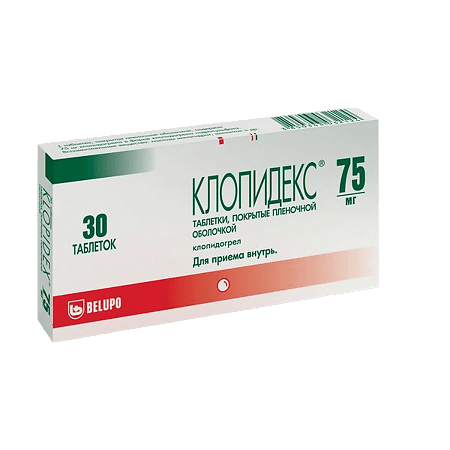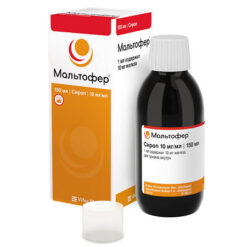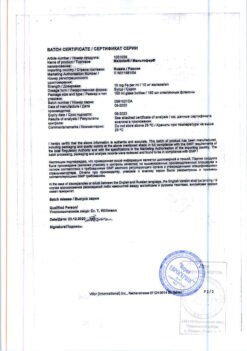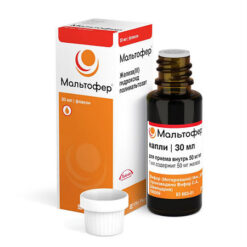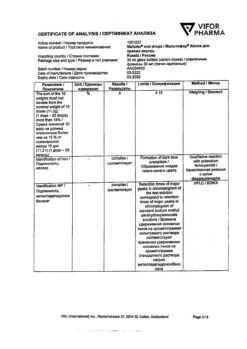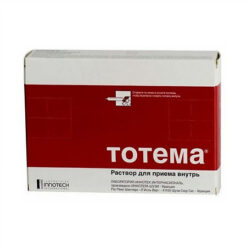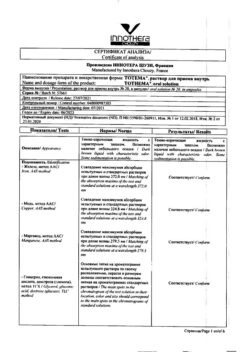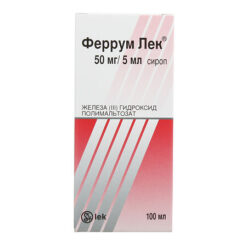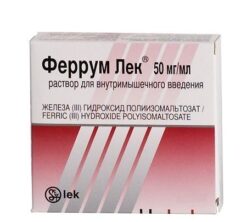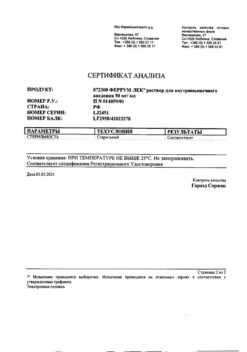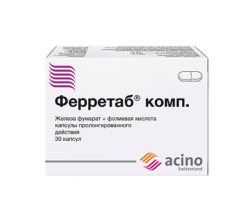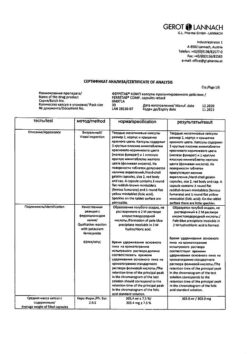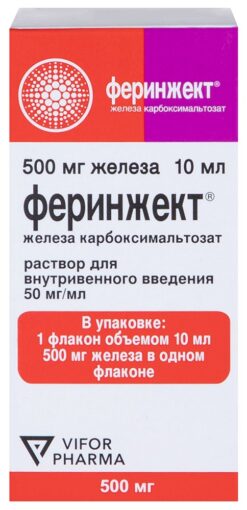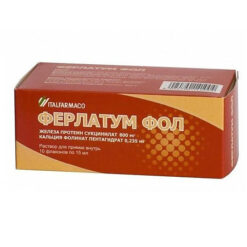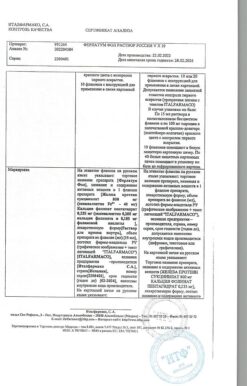No products in the cart.
Clopidex, 75 mg 30 pcs
€14.67 €12.72
Description
Clopidogrel is a specific and active inhibitor of platelet aggregation; it has coronarodilator effect. Selectively reduces the binding of ADP with receptors on platelets and activation of GPI Ib/IIIa receptors under the action of ADP. weakening platelet aggregation.
Creases platelet aggregation caused by other agonists by preventing their activation by released ADP, does not affect phosphodiesterase (PDE) activity. It binds irreversibly to platelet ADP receptors, which remain immune to ADP stimulation during the life cycle (about 7 days). Inhibition of platelet aggregation is observed 2 hours after administration (40% inhibition) of the initial dose of 400 mg. The maximum effect (60% suppression of aggregation) develops after 4-7 days of continuous dosing at a dose of 50-100 mg/day.
The antiplatelet effect lasts for the whole period of platelet life (7-10 days). In the presence of atherosclerotic vascular lesions it prevents the development of atherothrombosis regardless of the localization of the vascular process (cerebrovascular. cardiovascular or peripheral lesions).
Indications
Indications
Prevention of thrombotic complications:
after myocardial infarction (from several days to 35 days), ischemic stroke (from 6 days to 6 months) or with diagnosed peripheral arterial disease;
in acute coronary syndrome without ST segment elevation (unstable angina or myocardial infarction without a pathological Q wave), including patients undergoing percutaneous coronary bypass surgery, in combination with acetylsalicylic acid;
in acute coronary syndrome with ST segment elevation (acute myocardial infarction) in combination with acetylsalicylic acid, in patients receiving drug treatment with the possible use of thrombolytic therapy.
Pharmacological effect
Pharmacological effect
Clopidogrel is a specific and active inhibitor of platelet aggregation; has a coronary dilation effect. Selectively reduces the binding of ADP to platelet receptors and the activation of GPI Ib/IIIa receptors under the influence of ADP. weakening platelet aggregation.
Reduces platelet aggregation caused by other agonists, preventing their activation by released ADP, does not affect phosphodiesterase (PDE) activity. Irreversibly binds to platelet ADP receptors, which remain resistant to ADP stimulation throughout the life cycle (about 7 days). Inhibition of platelet aggregation is observed 2 hours after administration (40% inhibition) of the initial dose of 400 mg. The maximum effect (60% suppression of aggregation) develops after 4–7 days of continuous use at a dose of 50–100 mg/day.
The antiplatelet effect persists throughout the life of platelets (7–10 days). In the presence of atherosclerotic lesions of the vessel, it prevents the development of atherothrombosis, regardless of the location of the vascular process (cerebrovascular, cardiovascular or peripheral lesions).
Special instructions
Special instructions
During the treatment period, it is necessary to monitor indicators of the hemostatic system (activated partial thromboplastin time (aPTT), platelet count, platelet functional activity tests); regularly examine the functional activity of the liver.
Clopidogrel should be used with caution in patients at risk of severe bleeding due to trauma or surgery; patients receiving acetylsalicylic acid, non-steroidal anti-inflammatory drugs (including COX-2 inhibitors), heparin or glycoprotein IIb/IIIa inhibitors. Patients should be closely monitored for any signs of bleeding, including occult bleeding, especially during the first weeks of drug use and/or after invasive cardiac procedures or surgery. For planned surgical interventions, treatment with clopidogrel should be discontinued 7 days before surgery.
Patients should be warned that it will take longer than usual for the bleeding to stop, so they should tell their doctor every time there is bleeding.
Rare cases of thrombotic thrombocytopenic purpura (TTP) have been reported after taking clopidogrel. This condition was characterized by thrombocytopenia and microangiopathic hemolytic anemia in combination with neurological symptoms, renal dysfunction or fever. The development of TTP is life-threatening and requires urgent measures, including plasmapheresis. Due to insufficient data, clopidogrel should not be prescribed in the acute period of ischemic stroke (in the first 7 days). The drug should be prescribed with caution in patients with impaired renal function.
Clopidogrel should be prescribed with caution to patients with moderately impaired liver function, in whom hemorrhagic diathesis may occur.
Patients with congenital galactose intolerance, glucose-galactase malabsorption syndrome and lactase deficiency should not take clopidogrel.
Active ingredient
Active ingredient
Clopidogrel
Composition
Composition
1 tablet contains clopidogrel hydrosulfate 97.875 mg,
in terms of clopidogrel – 75 mg.
Contraindications
Contraindications
severe liver failure;
acute bleeding (for example, from a peptic ulcer or intracranial hemorrhage);
pregnancy;
breastfeeding period;
age under 18 years (safety and effectiveness of use have not been established);
hypersensitivity to the components of the drug. The drug should be prescribed with caution for diseases of the liver and kidneys (including moderate liver and/or renal failure), injuries, and preoperative conditions.
Side Effects
Side Effects
From the blood coagulation system: often – bleeding (in most cases – during the first month of treatment), purpura, hematomas; infrequently – conjunctival bleeding; rarely – intracranial bleeding; prolongation of bleeding time, leukopenia, decrease in the number of neutrophils and eosinophilia, decrease in the number of platelets.
From the hematopoietic system: very rarely – thrombocytopenic thrombohemolytic purpura, severe thrombocytopenia (platelet count < 30,000/μl), granulocytopenia, agranulocytosis, anemia, incl. aplastic anemia, pancytopenia.
From the nervous system: infrequently – headache, dizziness, paresthesia; rarely – vertigo; very rarely – confusion, hallucinations.
From the cardiovascular system: often – hematoma; very rarely – severe bleeding, bleeding from the surgical wound, vasculitis, decreased blood pressure.
From the respiratory system: very often – nosebleeds; very rarely – bronchospasm, interstitial pneumonitis, pulmonary hemorrhage, hemoptysis.
From the digestive system: often – diarrhea, abdominal pain, dyspepsia, bleeding from the gastrointestinal tract; uncommon – gastric and duodenal ulcers, gastritis, vomiting, nausea, flatulence, constipation; rarely – retroperitoneal bleeding; very rarely – colitis (including ulcerative or lymphocytic), pancreatitis, changes in taste, stomatitis, hepatitis, acute liver failure, increased activity of liver enzymes,
From the musculoskeletal system: very rarely – arthralgia, arthritis, myalgia.
From the urinary system: infrequently – hematuria; very rarely – glomerulonephritis, hypercreatininemia.
Dermatological reactions: very rarely – bullous rash (erythema multiforme, Stevens-Johnson syndrome, toxic epidermal necrolysis), erythematous rash, eczema, lichen planus.
Allergic reactions: very rarely – angioedema, urticaria, anaphylactoid reactions, serum sickness.
Other: very rarely – increased body temperature.
Interaction
Interaction
The combined use of clopidogrel with warfarin is not recommended, since this combination may increase the intensity of bleeding.
Prescribing glycoprotein IIb/IIIa inhibitors together with clopidogrel increases the risk of bleeding.
The use of non-steroidal anti-inflammatory drugs together with clopidogrel increases the risk of bleeding.
Concomitant use of clopidogrel with CYP2C19 inhibitors (for example, omeprazole) is not recommended.
No clinically significant pharmacodynamic interaction was observed when clopidogrel was used in combination with atenolol, nifedipine, phenobarbital, cimetidine, estrogens, digoxin, theophylline, tolbutamide, or antacids.
Overdose
Overdose
Symptoms: prolongation of bleeding time and subsequent complications.
Treatment: If bleeding occurs, appropriate therapy should be administered. If rapid correction of prolonged bleeding time is necessary, platelet transfusion is recommended. There is no specific antidote.
Storage conditions
Storage conditions
At a temperature not exceeding 25 °C
Shelf life
Shelf life
2 years
Manufacturer
Manufacturer
Bilim Pharmaceuticals, Türkiye
Additional information
| Shelf life | 2 years |
|---|---|
| Conditions of storage | At a temperature not exceeding 25 °C |
| Manufacturer | Belupo,medicines and cosmetics d.d., Croatia |
| Medication form | pills |
| Brand | Belupo,medicines and cosmetics d.d. |
Related products
Buy Clopidex, 75 mg 30 pcs with delivery to USA, UK, Europe and over 120 other countries.

